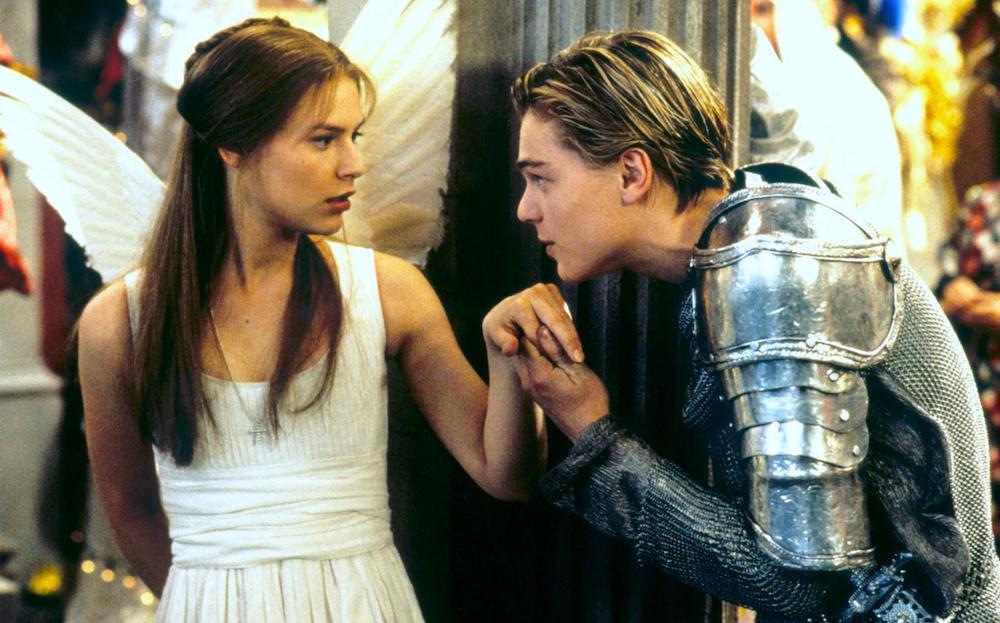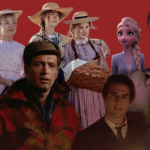Isabel Milford discusses how her favourite film still holds audiences captive on its 25th anniversary.
In line with the Catholicism of the 1996 film William Shakespeare’s Romeo + Juliet, I have a confession to make. Yes, I was one of those Tumblr users who, circa 2014, plastered their blog with stills of Baz Luhrmann’s shimmering yet gritty story-world. At any given moment, opening my page would no doubt reveal Leo staring you down, clad in that famous Hawaiian shirt, surrounded by the glow of neon crosses and the gaudy camp of Catholic excess. I’d even seen the film screened in a decked-out church, accompanied by a live choir. So, with my truth revealed, I am here to state why this film still stands up 25 years after its release.
Whilst Romeo + Juliet turns 25 in 2021, the 425th anniversary of the original play’s publishing is next year. Many traditionalists continue to believe the only way to perform Shakespeare is with a strictly male cast dressed in doublets and breeches. Some even question the use of the bard’s name in this film’s title and declare it should be renamed Luhrmann’s Romeo + Juliet. To me, however, this need to retain patriarchal traditions is precisely the root of the problems between the Montagues and Capulets in the narrative. It is tradition, patriarchal rule, masculinity, and violence that drive the plot and lead to the tragedy of the young lovers’ demise. This underlying theme of gender at its core and universal emotions of love and loss are just some of the reasons why this portrayal and adaptation still work today.
Romeo + Juliet is the second instalment of Luhrmann’s ‘Red Curtain Trilogy’, the other parts being Strictly Ballroom (1992) and Moulin Rouge (2001). The trilogy is not a traditional grouping of shared stories, characters, or themes, but rather explores Luhrmann’s stylistic filmmaking with a theatrical thread strung throughout. Strictly Ballroom portrays dance, Moulin Rouge song, and Romeo + Juliet puts forth the magic of poetry and language. However, despite maintaining its Elizabethan language, it doesn’t come across as archaic or pretentious, but approachable and enticing.

The film’s world draws us in through a small television, set within our own screen. From static comes forth a news presenter, and we hear those famous words,
Two households, both alike in dignity,
In Fair Verona, where we lay our scene,
From ancient grudge break to new mutiny,
Where civil blood makes civil hands unclean.
In the corner of the TV, we see the famous label ‘star-crossed lovers’ paired with a ring inscribed with our protagonists’ initials. This sequence is a friendly hand from our own time moving toward us, ready to lead us into a new world. The language and characters from days of old appear revitalised, poetry flowing from their mouths amongst the trappings of the 1990s; they appear here as new personas, whilst maintaining a connection to their 400-year-old originators. We follow them down the rabbit hole and become submerged in a space where the familiar becomes the extraordinary.
Over many centuries we’ve devoured and relished in experiencing new versions of these plays we’ve come to know and love. However, what is key to this version is its internal verisimilitude. It’s one thing to perform Shakespeare; it is an entirely different thing to take its essence and draw out something new. Luhrmann’s adaptation is so successful because its roots are firmly grounded in the story’s core emotions. The old and the new meet, and Luhrmann’s vision is so crystal-clear that the beauty of Shakespeare’s words seem to fit within the indulgent mise-en-scène, as if they were improvised, spoken truly by the characters. The two worlds collide thanks to the devotion of Luhrmann’s vision; they are not in contrast but lovingly entwined. Even if you know Romeo and Juliet inside out, this adaptation still fires its emotions at you and hits its target.

Luhrmann places Shakespeare’s words within an aesthetically fictional space which is both familiar and spectacular, finding just the right balance. This film isn’t simply stylised to look cool, the world it builds and the aesthetic it utilises are in service to the text. The film-world’s heightened aesthetics draw out the tension and melodrama found in the underbelly of the capitalist empires that stand in for the feuding families. If emotion is the beating heart of this adaptation, poetry is the blood, and the aesthetic worldbuilding and intertextuality are the veins. All are vital.
This film is not ‘Misshapen chaos of well-seeming forms!’ as Romeo might say, but carefully crafted literary escapism. From the ‘Globe Theatre’ pool hall, the Capulet’s costumes as Antony and Cleopatra, Jack Cade’s lemonade stall, and signs embellished with various quotes, the world is drenched in literary nods. Venice Beach may inspire it, but it is in a world of its own. Luhrmann’s vision and the creations of production designer Catherine Martin and costume designer Kym Barrett create such an effect that this doesn’t feel like a 400-year-old play disguised as a film, but its own creation. From the Montagues’ flowy bright Hawaiian shirts to the Capulet’s zippered vests with religious imagery, to Mercutio’s drag persona, each item builds the story. The music is also essential, with the iconic use of Radiohead and The Cardigans, and the raising of Prince’s lyrics to the height of gospel. Strong visual editing by Jill Bilcock also helps to build a heightened, aestheticised spectacle of a world that’s invites us into its sensory escape.
So, whilst no-one got to enjoy a warm summer evening at the globe this year, and ‘all that glitters is not gold’, the world of Romeo + Juliet, drenched in the glow of the golden sun is a much-needed treasure of an experience indeed.




